Wheeled loaders: innovations abound
05 February 2021
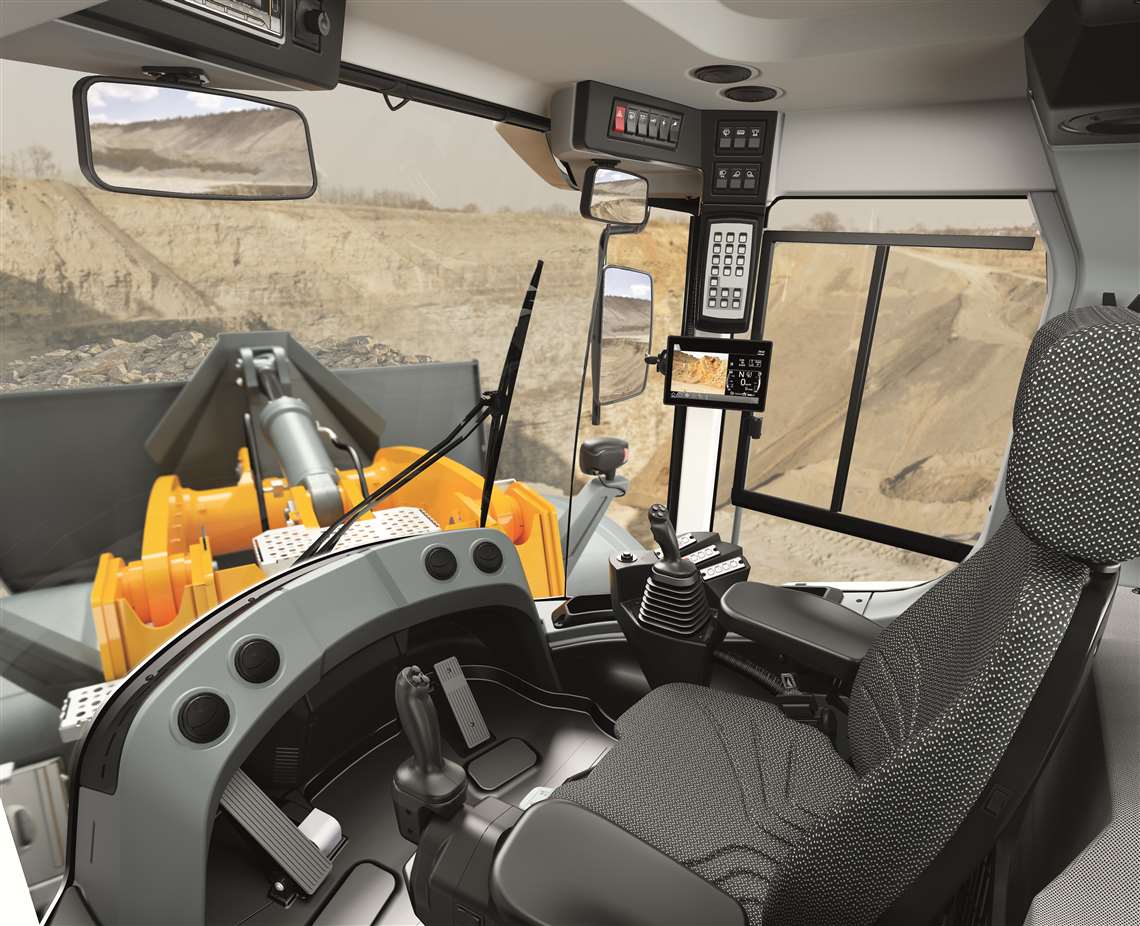 Liebherr says that joystick steering has many advantages
Liebherr says that joystick steering has many advantages
Even though it might not always seem that way, the equipment being used in construction is constantly changing and evolving. Sometimes those changes are big, sometimes they are small, incremental adjustments that can be hard to notice, but they are there. Wheeled loaders are no exception to this.
For example, when John Deere launched the 944K Hybrid model back in 2015 it was one of the first hybrid wheeled loaders to be in mass production in the industry, it was something a little bit different. Now most of the major OEMs offer a hybrid solution to their customers.
“When we launched the 944K Hybrid model, we saw significant interest, and that has only grown as hybrid-electric machinery has increased in popularity. To combat some customers’ hesitancy to the hybrid technology on the 944K, John Deere included an industry leading eight-year/20,000-hour warranty on the power electronic components,” says Luke Gribble, solutions marketing manager, quarry & aggregate, John Deere.
“Now as these machines have surpassed one million field hours, as of October 2020, it’s easy to see that customers have accepted the durability and performance advantages of this technology within their applications.”
Constant improvements
While changes aren’t always as big as the move to hybrid power, when OEMs launch new models now there are a series of improvements and tweaks: these often involve a better cabin for the operator and the integration of new technology, as is the case with Doosan Infracore Europe’s recent launch of the new DL420-7 Stage V wheeled loader.
The new model is said by Doosan to have a new design, providing higher performance, increased fuel efficiency and an enhanced environment for the operator compared to the previous Stage IV model.
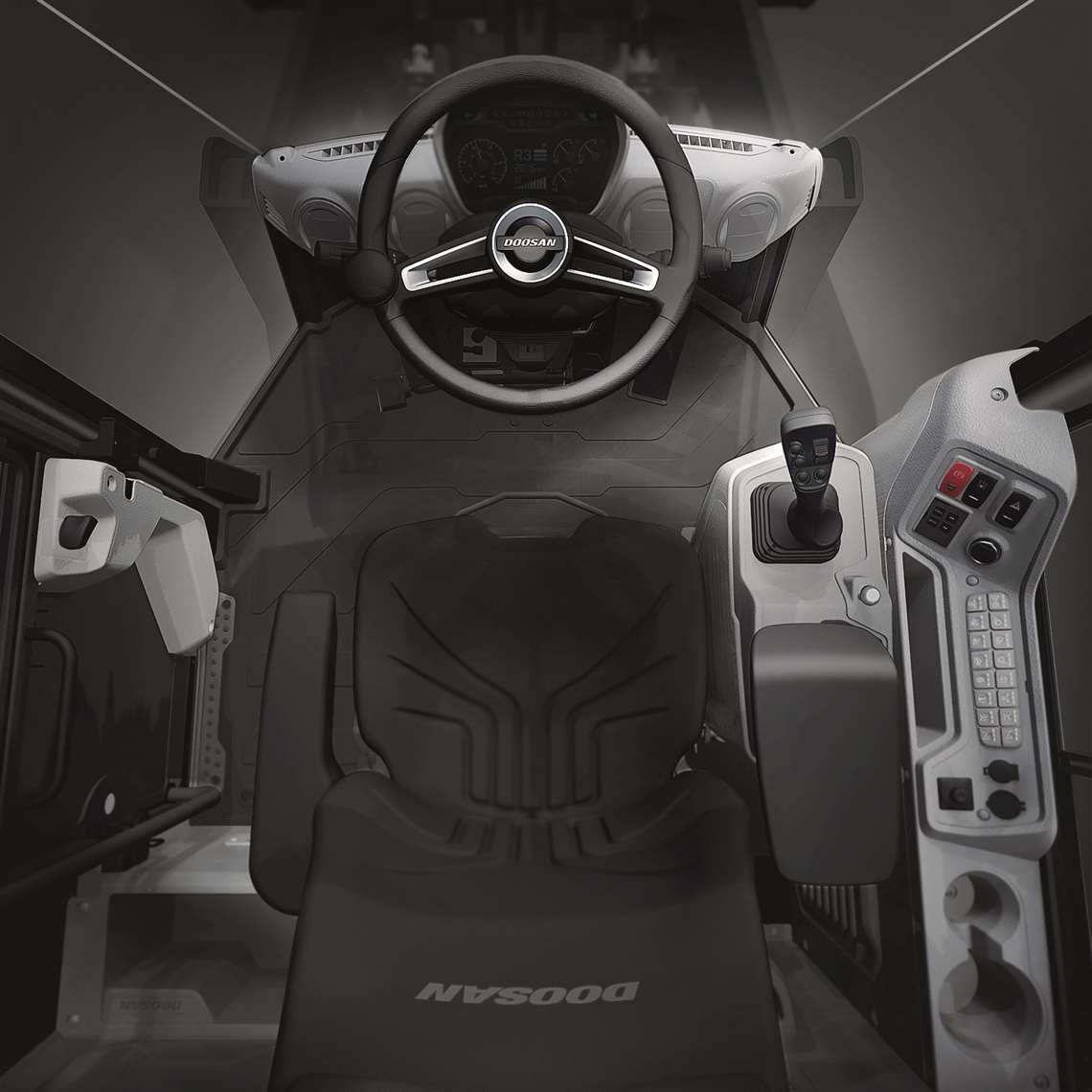 Increased operator comfort is a priority for all OEM
Increased operator comfort is a priority for all OEM
Using the new Doosan Smart Key system on the control panel in the cab, the operator can start the machine using a keyless device, helping to prevent machine theft. Up to six machines can be registered on each keyless device and the Smart Key system provides remote door control, door lock and unlock, door release, searching and other functions.
The new EMCV (Electric Main Control Valve) joystick fully integrated in the armrest is another standard feature in the cab, providing the operator with, according to Doosan, smoother and precise controllability. The sensitivity of the joystick control can be set and altered according to operator preferences using the new 8 inch touch screen monitor.
The DL420-7 has a higher standard bucket capacity of 4. m3, the largest in its class, and provides a 7% increase in productivity over the previous model. With automatic 5-speed powershift transmission and heavy duty HDL axles as standard.
The DL420-7 is powered by the new Scania DC13 Stage V 6-cylinder engine producing 257kW (345 HP) of power at 1800 rpm and providing maximum torque of 2196 Nm at 1100 rpm. The new engine meets Stage V emission regulations without the need for exhaust gas recirculation (EGR), through the use of selective catalyst reduction, diesel oxidation catalyst and diesel particulate filter (DPF) after-treatment technologies.
Controlling the wheeled loader
Another change in wheeled loaders is how they are controlled by the operator, with joystick steering an option that is offered by an increasing number of OEMs. One of these is Liebherr – the company offer three steering options: the classic steering wheel, a combination of steering wheel and joystick steering and just joystick steering for models L 566 XPower to L 586 XPower.
“Liebherr has been installing joystick steering in its wheel loaders for many years,” says product manager for large wheel loaders, Mark Walcher, from Liebherr-Werk Bischofshofen GmbH. “The customer feedback that we have collected on our first joystick steering system has been incorporated into the new joystick steering system that we have been offering since 2019, in order to be able to offer an even more operator-friendly and intuitive steering system.
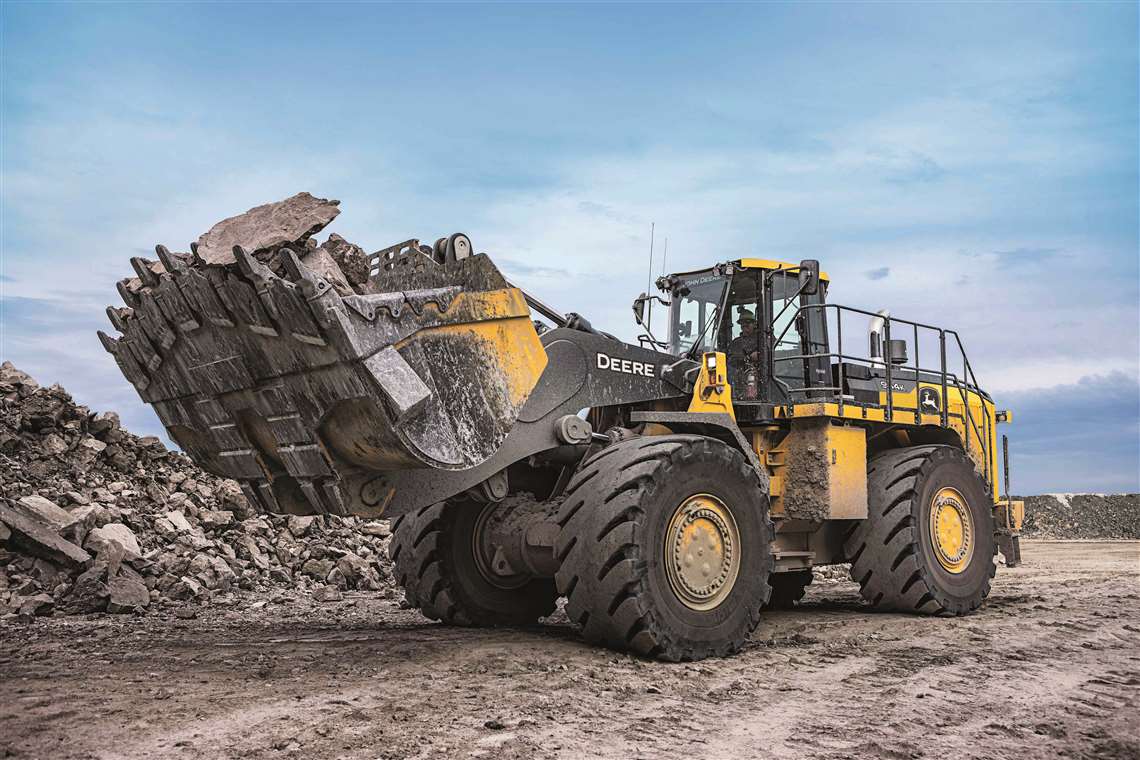 John Deere’s hybrid powered wheeled loaders have surpassed one million field hours
John Deere’s hybrid powered wheeled loaders have surpassed one million field hours
“The big challenge for our engineers was to develop a system that would give the driver feedback on the respective articulation angle and driving conditions at all times, while also enabling safe and comfortable working with the wheel loader. Our new joystick steering system with force feedback offers our customers exactly that.”
By offering operators three different options Liebherr are letting their operators decide, but clearly see that joystick steering has its advantages – such as enabling the operator to steer with one hand and making operating less physically taxing.
On the reaction of operators to it Walcher comments that, “It can be said that the choice of a steering variant is a question of faith among operators. With our new joystick steering system, however, we were able to persuade even die-hard steering wheel operators to the new steering variant. It takes about 15 minutes to get used to the new steering system. Customers who have already driven a Liebherr joystick steering system are enthusiastic about the new intuitive steering system.”
New launches and updates
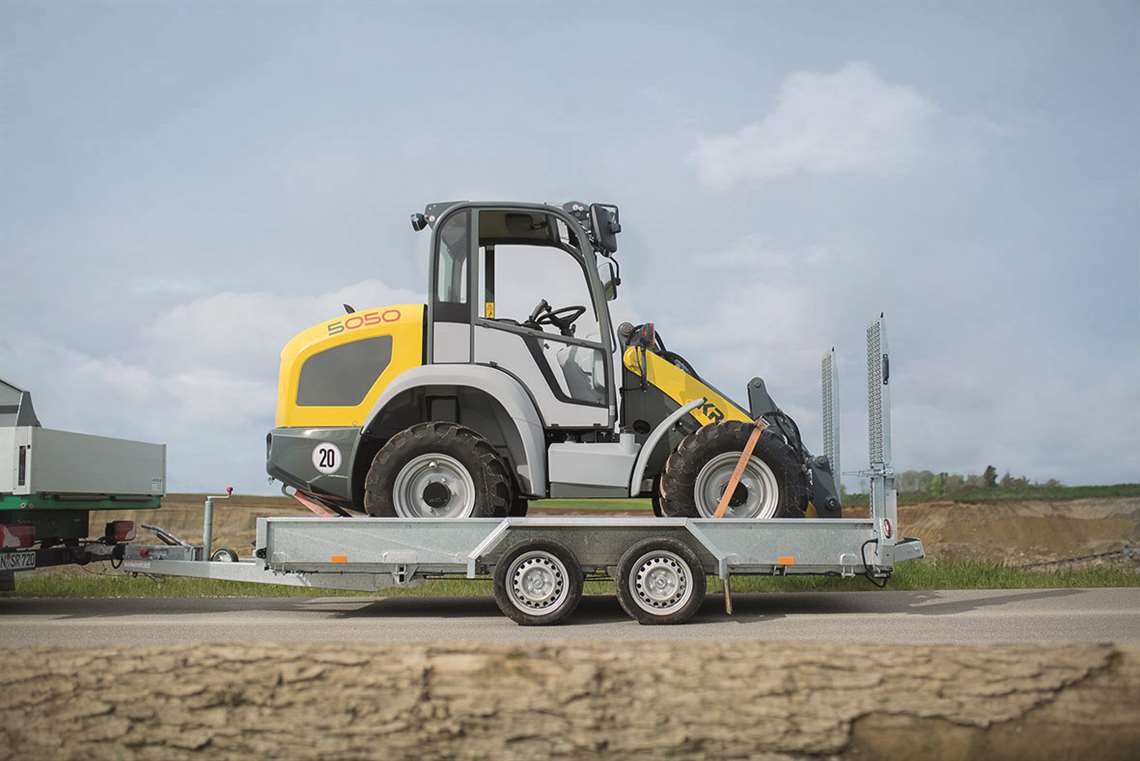 Kramer has introduced two new Stage V-ready compact wheeled loaders
Kramer has introduced two new Stage V-ready compact wheeled loaders
A manufacturer that has enjoyed success in the wheeled loader segment, Kramer, announced in the middle of 2020 that it had introduced two new Stage V-ready compact wheeled loaders, the 5035 and 5040, for tight working conditions.
The two newly developed compact wheeled loader models, with different power ratings available, include the well-known 5035, which has an 18.5 kilowatt Yanmar engine, a bucket tipping load of 1,140 kilograms and an operating weight of 1,920 kilograms.
The new 5040 model is equipped with a 28.5 kilowatt Yanmar engine and has a slightly higher operating weight at 2,070 kilograms, as well as a bucket tipping load of 1,400 kilograms. Both models feature a new cab design, as well as some modern comfort features and power options. With their dimensions, they are ideal for low clearance heights and tight passages, making them ideal for the construction industry.
Another leading OEM in this sector, Volvo Construction Europe (Volvo CE), recently announced that the company’s wheeled loaders L60H up to L350H were receiving an update.
Volvo CE’s Volvo Co-Pilot monitor is now available on a wider range of machines – from L60H up to L350H. The 10 inch in-cab touchscreen provides access to several Load Assist applications (depending on machine model) aimed at optimising operator performance and site efficiency.
A Tire Pressure Monitoring System gives operators real-time information on the conditions of machine tires. By monitoring individual tire pressure and temperature, the app helps to save fuel, prolong tire life, as well as avoiding expensive damage, repairs or downtime.
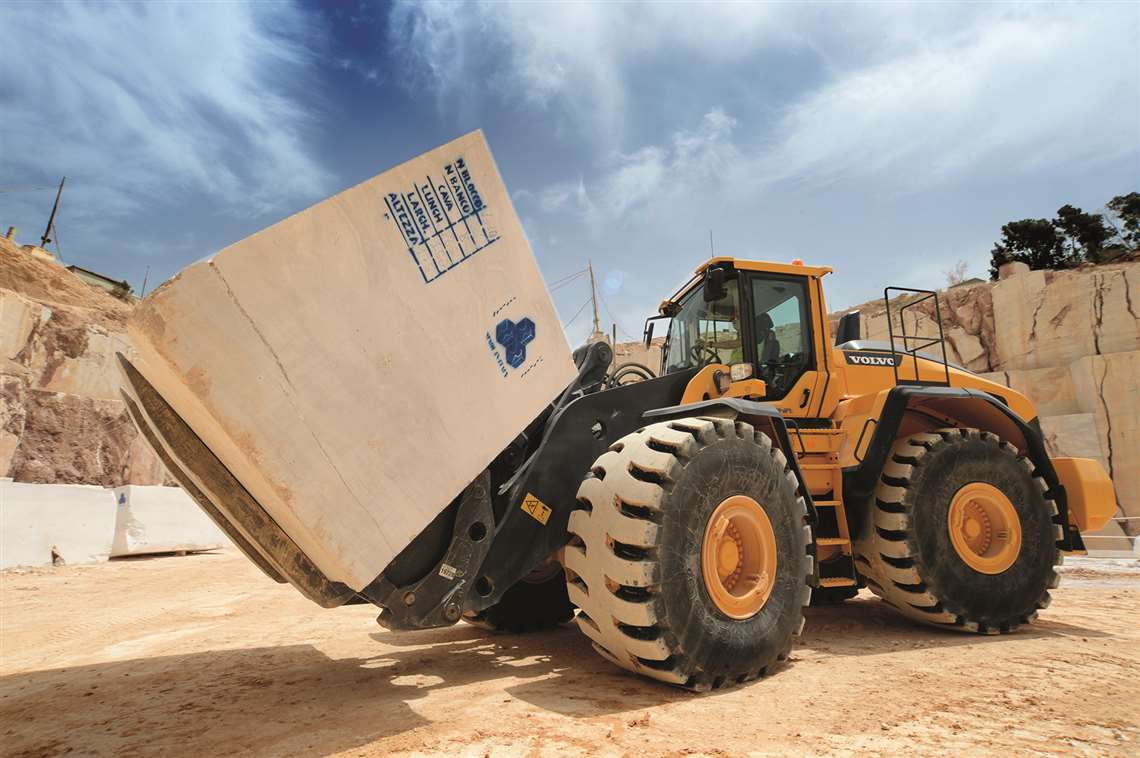 Volvo CE’s wheeled loaders L60H up to L350H have recently been updated
Volvo CE’s wheeled loaders L60H up to L350H have recently been updated
A map application has also been added so operators can get better visibility and understanding of the site layout and real time site traffic situation, allowing them to adjust their driving behavior accordingly. Weather, Calculator and Notes apps are new too – these functions work similarly to those found on a smartphone and are pre-installed in the Volvo Co-Pilot.
Wheeled loader product manager Lars Eriksson commented that, “We are confident that these updates will help get the most out of the Volvo H-Series wheel loaders. As always we want to hear from customers and build on our knowledge to continue to bring the best machines that current technology has to offer.”
Future wheeled loader developments
Looking to the future, it is clear that a wheeled loader produced in ten years’ time in 2030 will look very similar and recognisable to today’s models – it may be the biggest changes are more to do with how the machine is powered and its operating systems.
Talking about how technology can vastly improve an operators experience John Deere’s Gribble says that, “New electro-hydraulic (EH) controls are standard on all utility and production class L-Series wheel loaders. EH controls are one example of using technology to enhance comfort, ease of operation and performance.
“EH controls enable a host of benefits such as in-cab programmable return to dig and monitor settings like soft stops, aggressiveness, and precision mode. These settings, and more, allow the operator to optimise machine performance for specific job tasks.”
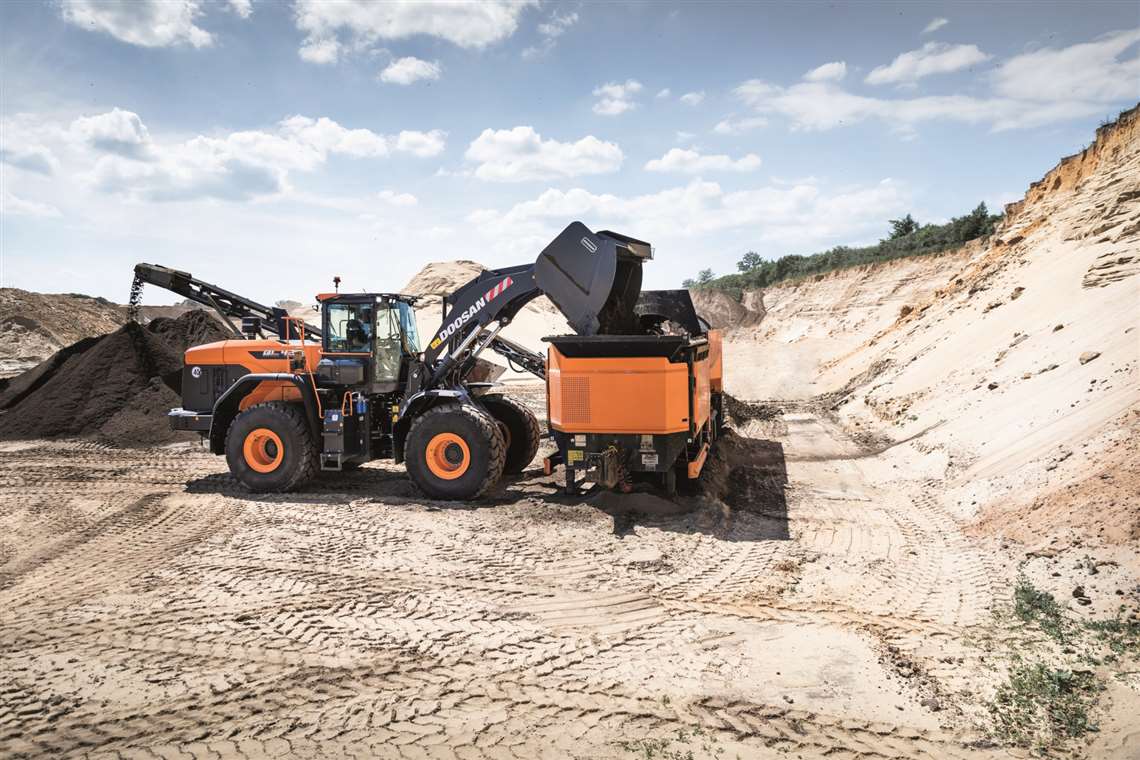 Doosan Infracore Europe recently launched the new DL420-7 Stage V wheeled loader
Doosan Infracore Europe recently launched the new DL420-7 Stage V wheeled loader
Christian Hallinger from Liebherr-Werk Bischofshofen GmbH comments that, “We can achieve the greatest innovations through the technologies of digitalisation and automation, if we solve our customers’ problems and challenges and make their work processes more efficient, safer, and more reliable.”
He uses the example of the company’s further development of the assistance system ‘active personnel detection at the rear’ with two functions that will soon be available to the market: brake assistant and a hazard map. With the brake assist, as soon as a dangerous situation is detected in the rear area of the wheel loader, an automatic deceleration to a standstill is initiated.
Explaining about the hazard map, Hallinger says, “Dangerous situations recognised by the active personnel detection at the rear are combined with GPS points and can thus be displayed on a map via LiDAT (Liebherr Telematics Data System). This makes it possible to identify high-risk areas on the company premises.”
The wheeled loaders of the future may not look vastly different, but they are sure to be safer, more comfortable to operate, more productive and packed with technology as standard.
|
New models from Sany Europe 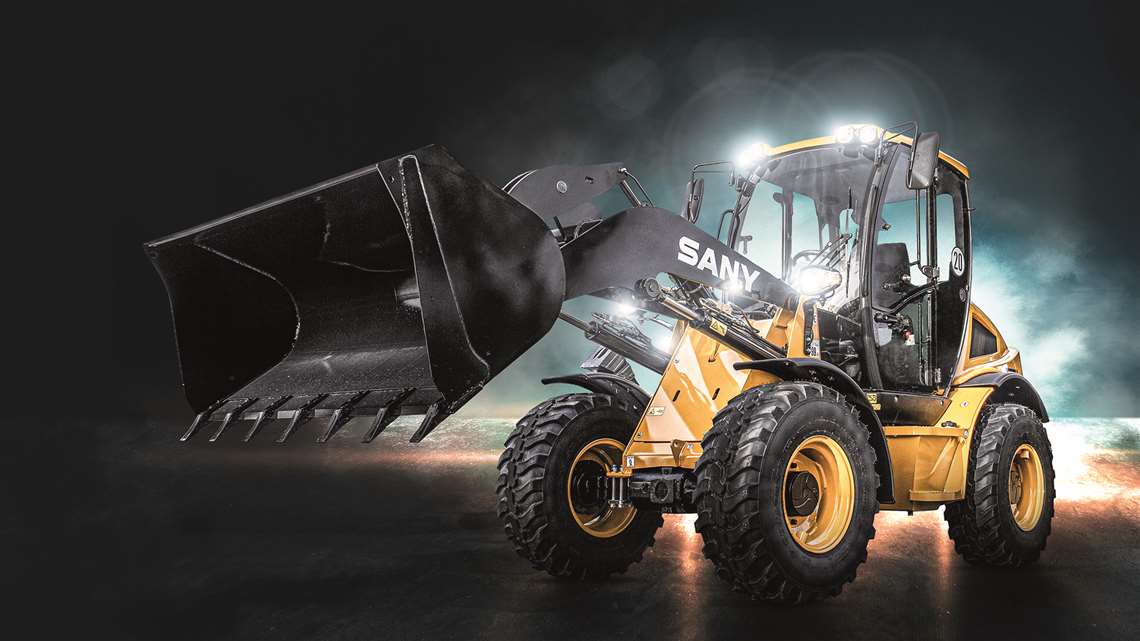
Sany Europe has been distributing 15 models of hydraulic excavator, ranging from 1.6 to 50 tonnes, across Europe since 2016. The latest addition to the portfolio, launched in November 2020, is a line-up of compact wheeled loaders, ranging from 0.7 to 1.1 cubic metres bucket capacity, spread across four models. The company said that the extended product portfolio enables it to serve customers better and offer machines for more applications and industries as it looks to becoming a leading construction equipment company in Europe. In addition, the wheeled loaders benefit from oscillating rear axles, which are normally found on larger machines to increase stability. Based on bucket volume capacity, the range comprises the SW075, SW085, SW105 and SW11. |







